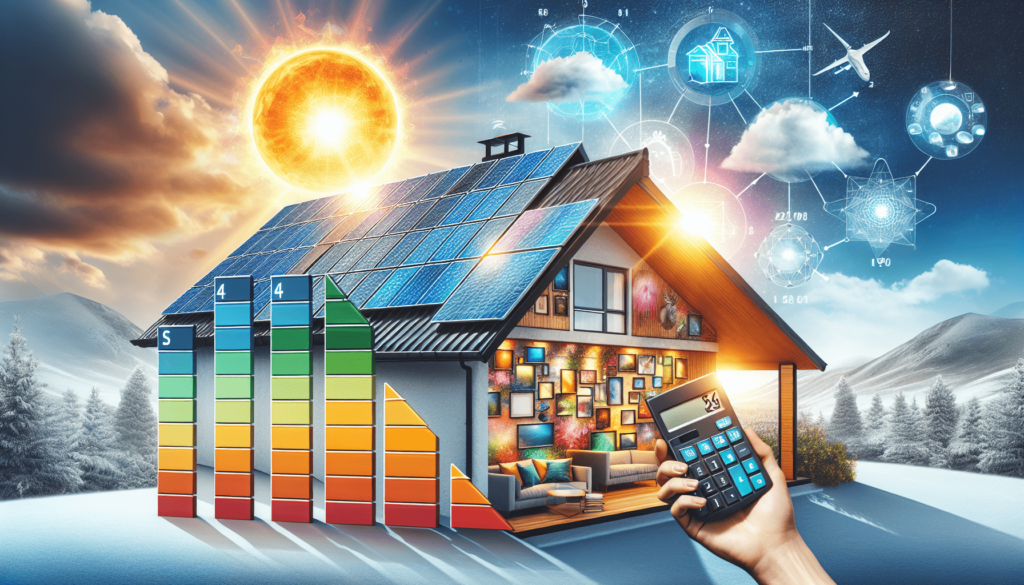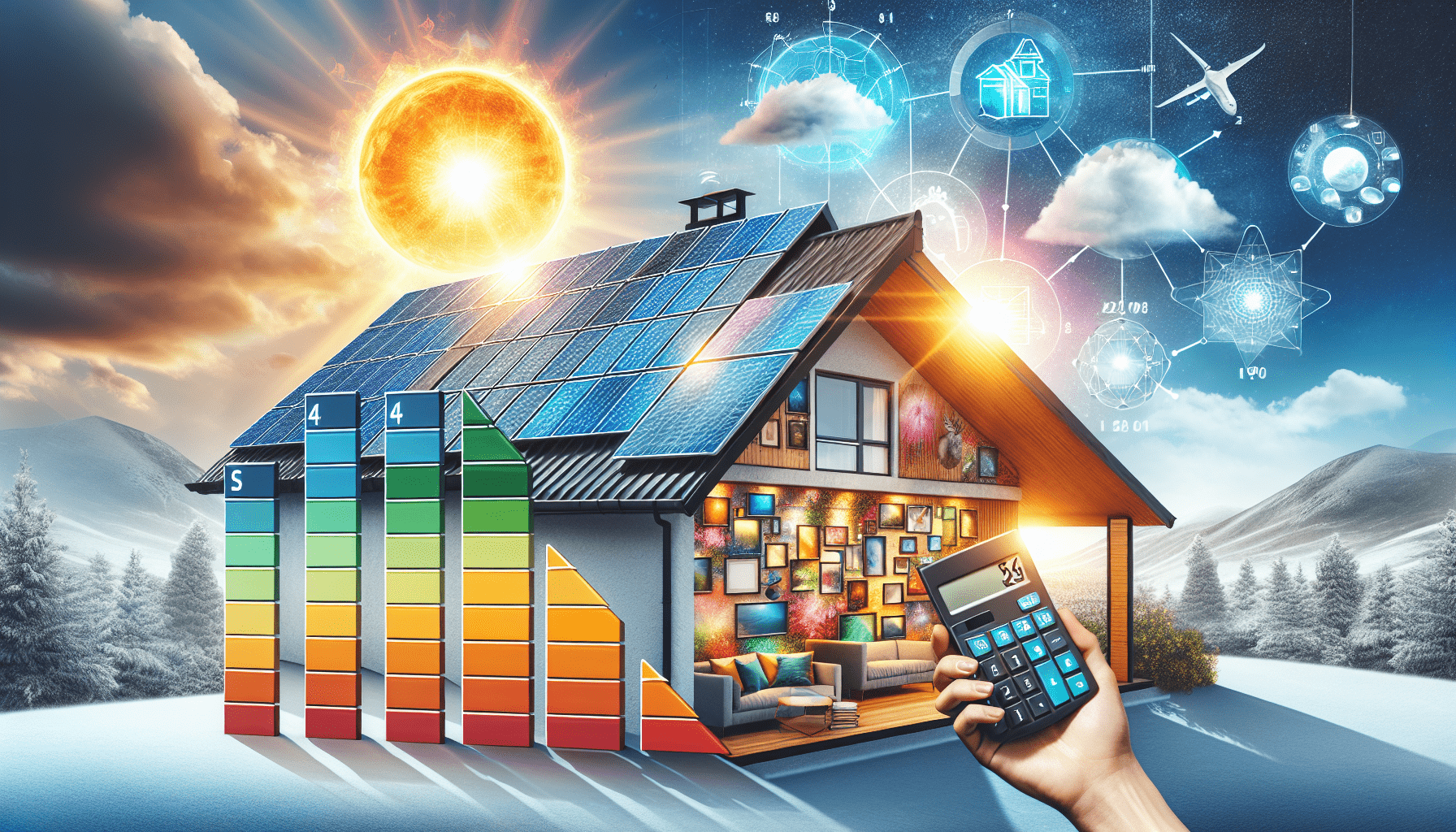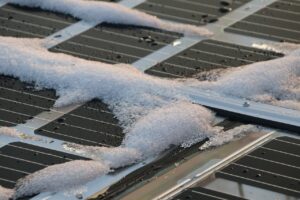Curious about how to determine the perfect-sized solar energy system for your specific needs? Look no further! In this article, we explore the ins and outs of calculating the ideal size for your solar energy system, taking into account factors such as your energy consumption, geographical location, and budget. With our helpful tips and insights, you’ll soon be well-equipped to make an informed decision on what size solar energy system is just right for you. So, let’s dive in and shed some light on this sun-powered topic!

Factors to consider
When considering the installation of a solar energy system, there are several factors that need to be taken into account. These factors include energy consumption, available roof space, and budget. By carefully considering these factors, you can ensure that the solar energy system you choose will meet your needs and provide the maximum benefits.
Energy consumption
Before determining the size of the solar energy system you need, it is important to understand your energy consumption. By analyzing your average and peak energy usage, you can get a better understanding of the size of the system that will be most suitable for your needs.
Available roof space
The available roof space plays a crucial role in determining the size of the solar energy system that can be installed. The orientation and tilt angle of your roof, as well as any shades or obstructions, need to be taken into consideration. A roof with ample space and ideal tilt and orientation will allow for the installation of a larger system that can produce more energy.
Budget
Your budget is another important factor to consider when determining the size of your solar energy system. The cost of the system will depend on factors such as the size of the system, the type of solar panels used, and any additional components required. By setting a budget, you can ensure that you choose a system that is both financially feasible and meets your energy needs.
Calculating energy consumption
To determine the size of the solar energy system you need, it is important to have a clear understanding of your energy consumption. By calculating your average energy usage and peak energy usage, you can estimate the amount of energy your system should be able to generate.
Average energy usage
To calculate your average energy usage, you can refer to your utility bills from the past year. Look for the average monthly or annual kilowatt-hour (kWh) usage. By summing up the total kWh usage and dividing it by the number of months, you can determine your average monthly energy consumption.
Peak energy usage
Peak energy usage refers to the highest amount of energy you consume at any given time. This can occur during periods of high demand, such as when you have multiple appliances running simultaneously. By identifying your peak energy usage, you can ensure that your solar energy system is capable of meeting your highest energy demands.

Determining available roof space
The available roof space is a crucial factor when determining the size of your solar energy system. A larger roof with optimal orientation and tilt angle will allow for the installation of a larger system that can generate more energy. However, shading and obstructions on the roof can impact the efficiency of the system.
Orientation and tilt angle
The orientation and tilt angle of your roof are important considerations for solar panel installation. Ideally, the roof should face south in the northern hemisphere or north in the southern hemisphere to maximize sunlight exposure. Additionally, the tilt angle should be adjusted to match the latitude of your location. By optimizing the orientation and tilt angle, you can maximize the energy generation potential of your solar panels.
Shading
Shading can significantly reduce the efficiency of your solar panels. Trees, buildings, or other obstructions that cast shadows on your roof can block sunlight and diminish the amount of energy your panels can generate. It is important to assess the shading on your roof and consider trimming or removing any trees or obstructions that may impact the performance of your solar energy system.
Roof size
The size of your roof will determine the maximum number of solar panels you can install. A larger roof will have more available space for panels, allowing for a larger system and greater energy production. However, even with a smaller roof, careful planning and optimization can still result in a solar energy system that meets your needs.
Types of solar panels
There are different types of solar panels available in the market, each with its own advantages and drawbacks. The most common types of solar panels are monocrystalline, polycrystalline, and thin-film panels. Understanding the differences between these panels can help you make an informed decision regarding the type of panel that is best suited for your needs.
Monocrystalline
Monocrystalline solar panels are made from a single crystal structure, which gives them a uniform appearance and highest efficiency among all types of solar panels. They are known for their sleek black appearance and excellent performance in sunny conditions. However, they are typically more expensive compared to other types of panels.
Polycrystalline
Polycrystalline solar panels are made from multiple crystal structures, resulting in a blue-ish appearance. While they are slightly less efficient compared to monocrystalline panels, they are generally more affordable. Polycrystalline panels perform well in a variety of conditions and can be a cost-effective option for many homeowners.
Thin-film
Thin-film solar panels are made by depositing a thin layer of photovoltaic material onto a substrate. They are lightweight and flexible, making them suitable for certain applications where traditional solar panels may be impractical. However, their efficiency is generally lower compared to crystalline panels, and they require more space to generate the same amount of energy.

Efficiency of solar panels
The efficiency of solar panels refers to their ability to convert sunlight into electricity. Higher efficiency panels can generate more electricity from the same amount of sunlight compared to lower efficiency panels. When considering the efficiency of solar panels, it is important to consider both the conversion efficiency and the temperature coefficient.
Conversion efficiency
The conversion efficiency of a solar panel is the percentage of sunlight it can convert into usable electricity. Higher conversion efficiency means that more sunlight is converted into electricity, resulting in greater energy production. When choosing solar panels, it is generally advisable to select panels with a higher conversion efficiency to maximize energy generation.
Temperature coefficient
The temperature coefficient of a solar panel refers to its ability to maintain its efficiency under high temperatures. Solar panels can experience a decrease in efficiency as they heat up. Panels with a lower temperature coefficient are better at maintaining their efficiency at high temperatures, making them more suitable for hot climates.
System size and energy production
The size of your solar energy system directly impacts the amount of energy it can produce. A larger system will have a higher energy output compared to a smaller system. Understanding the relationship between system size and energy production is crucial when determining the size of your solar energy system.
System size and energy output relationship
The size of a solar energy system is typically measured in kilowatts (kW) and refers to the total installed capacity of the system. The energy output of a system is measured in kilowatt-hours (kWh) and refers to the amount of electricity the system can produce over a given period.
Expected energy production
The expected energy production of a solar energy system depends on several factors, including the size of the system, the efficiency of the panels, the location of the system, and the amount of sunlight available. By consulting with a solar installer or using online solar calculators, you can estimate the expected energy production of a system based on your specific circumstances.

Incentives and regulations
When considering the installation of a solar energy system, it is important to be aware of any incentives and regulations that may apply. Federal, state, and local governments often provide incentives such as tax credits, grants, or rebates to encourage the adoption of solar energy. Additionally, net metering policies allow for the sale of excess electricity back to the grid, further incentivizing solar energy systems.
Federal, state, and local incentives
The availability and details of incentives can vary depending on your location. It is important to research and understand the incentives available at the federal, state, and local levels to determine the financial benefits they can provide. These incentives can significantly reduce the cost of a solar energy system and improve its return on investment.
Net metering
Net metering allows homeowners with solar energy systems to offset their electricity bills by selling excess electricity back to the grid. Under net metering policies, the excess electricity generated by the solar panels is fed into the grid, and the homeowner is credited for the electricity they contribute. This ensures that homeowners benefit from their solar investment even during periods of lower energy consumption.
Relevant regulations
Understanding the relevant solar energy regulations in your area is crucial for a smooth installation process. Building permits, interconnection agreements, and utility regulations may all play a role in the installation and operation of your solar energy system. It is important to consult with a solar installer or local authorities to ensure compliance with all applicable regulations.
Financial considerations
When planning to install a solar energy system, it is important to consider the financial aspects of the project. Understanding the costs involved and the potential return on investment will help you make an informed decision.
Cost of the system
The cost of a solar energy system can vary depending on factors such as the size of the system, the type of solar panels used, the complexity of the installation, and any additional components required. It is important to obtain quotes from multiple solar installers and carefully review the breakdown of costs to ensure you are receiving a fair and competitive price.
Return on investment
The return on investment (ROI) of a solar energy system refers to the financial benefits it can provide over its lifetime. By calculating the savings on electricity bills, the value of incentives and credits, and the potential increase in property value, you can estimate the ROI of your solar energy system. With careful planning and consideration of all costs and benefits, solar energy systems can provide a significant return on investment.
Getting a professional assessment
To ensure that you choose the right size solar energy system for your needs, it is recommended to seek a professional assessment. Solar installers have the expertise and knowledge to evaluate your energy consumption, available roof space, and other relevant factors to determine the optimum size and type of system for your specific requirements.
Consulting a solar installer
A solar installer can provide valuable insights and guidance throughout the process of selecting and installing a solar energy system. They can assess your energy needs, evaluate your roof space, and provide recommendations on the most suitable system for your property. Consulting a solar installer will ensure that you make an informed decision and maximize the benefits of your solar energy system.
Energy audit
An energy audit conducted by a professional can also provide valuable information about your energy consumption and help identify areas for energy efficiency improvements. By addressing energy inefficiencies through measures such as insulation, sealing air leaks, and upgrading appliances, you can reduce your energy consumption and potentially decrease the size of the solar energy system needed.
Conclusion
Choosing the right size solar energy system for your needs involves careful consideration of several factors. By assessing your energy consumption, available roof space, and budget, you can determine the most suitable system size. Understanding the different types of solar panels and their efficiencies will help you select the right technology for your requirements. Additionally, considering financial aspects such as the cost of the system and the potential return on investment will assist you in making an informed decision. Seeking a professional assessment from a solar installer and conducting an energy audit can further optimize your system selection. By weighing all these factors, you can ensure that your solar energy system meets your needs, provides maximum benefits, and contributes to a sustainable future.




